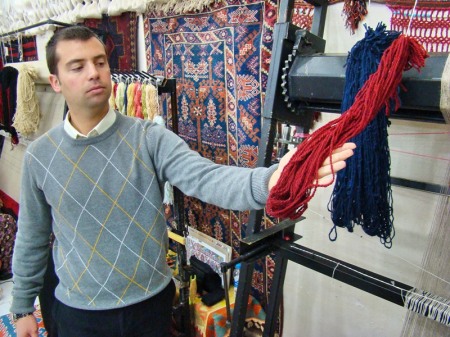Today our group visited Corinth and then Cenchreae. The day was beautiful weather-wise, and thus provided great opportunities to take photos which we plan to share on this blog as well as use in other teaching/publishing formats.
For today I want to backtrack a bit and go back to Thyatira, one of the Seven Churches addressed in Revelation 2-3, and also home of Lydia, the first convert in Philiipi (Acts 16:14). Philippi, where we meet Lydia, is described as “a leading city of the district of Macedonia and a Roman colony” (Acts 16:11, ESV). Philippi is now in Greece, north of where we are presently (Athens).
The text reads, “We remained in this city some days. And on the Sabbath day we went outside the gate to the riverside, where we supposed there was a place of prayer, and we sat down and spoke to the women who had come together. One who heard us was a woman named Lydia, from the city of Thyatira, a seller of purple goods, who was a worshiper of God. The Lord opened her heart to pay attention to what was said by Paul. And after she was baptized, and her household as well, she urged us, saying, “If you have judged me to be faithful to the Lord, come to my house and stay.” And she prevailed upon us” (Acts 16:12-15, ESV).
Thyatira, Lydia’s former home, was known for its trade guilds. “No other city seems to have had so many guilds as Thyatira: coppersmiths, bronze workers, tanners, leather workers, dyers, workers in wool and linen, potters, bakers, and slave dealers” (Biblical Sites in Turkey, by Blake and Edmonds, p.132).
Regarding the purple dye, Todd Bolen observes, “Thyatira was most known for the dyeing of purple cloth, a fact which Homer even references in his Iliad. There are two theories as to how the dye was made. One theory holds that the dye came from sea slugs and shells found in the Mediterranean; the other postulates that the dye was extracted from the roots of plants. Thyatira’s inland location most supports the latter theory.”
With that in mind, we post here a photo of the madder root from which the purple dye comes:
Notice the color of the wool dyed with the madder root in these next two shots:
Look at this small carpet; note the part of the pattern which was dyed with the madder root.
The city of biblical Thyatira is modern Akhisar, with a population of about 100,000. Very little has been excavated; archaeological excavation was done by Rustem Duyuran from 1968 to 1971. The ruins of the basilica in the photo below date to the 5th or 6th century A.D. The white objects on your right are architectural fragments of arches, columns, etc., and date back to Roman times.
The church that met in the ancient city was commended for its love, faith, service and patient endurance (Rev. 2:19). However, Jesus went on to say, “But I have this against you: you tolerate the woman Jezebel, who calls herself a prophetess, and teaches and deceives My slaves to commit sexual immorality and to eat meat sacrificed to idols” (Rev. 2:20). The wicked Jezebel of Old Testament fame had a modern counterpart. She was condemned for her false teaching and evil influence, and the church was wrong to fellowship her.
More later!








 Posted by Leon Mauldin
Posted by Leon Mauldin 